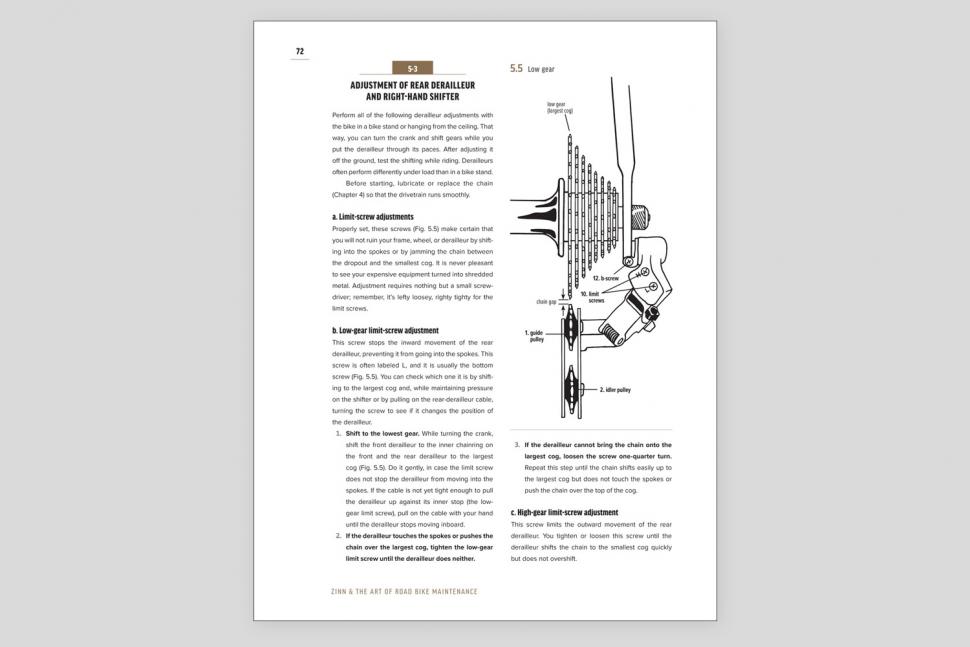Zinn And The Art Of Mountain Bike Maintenance Pdf Torrent

For some people the Zinn series of books is already the maintenance manual of choice, so simply knowing that a new edition of Zinn & the Art of Road Bike Maintenance is available will be sufficient: the book claims to be 'the world's best-selling bicycle repair and maintenance guide', so that should mean a lot of satisfied users just waiting for an updated version. Lennard Zinn's first book on road bike maintenance came out in 2000, with further editions following in 2005, 2009 and 2013. You can see that the books are being revised more frequently to keep pace with the increasing rate of technological developments.
Lennard Zinn’s maintenance books have been the gold standard for home mechanics for many years, and we’ve seen a number of shop rats who got their start thumbing through the pages. All in all his guides are the most popular resource worldwide for bicycle repair and maintenance, from basic tire.
Download pallypower addon 335. Mountain bikes and triathlon bikes have their own series of dedicated books, with cyclo-cross coming under the road title. Not surprisingly, there will be common ground between each series, and this overlap seems to be growing: things like disc brakes and thru-axles have made it over to the road version, just as Di2 shifting technology will go the other way to the mountain bike version.
The book claims to cover the newest technology, and does indeed include recent developments such as SRAM eTap; however, the very nature of such a book is that it starts to become out of date as soon as it is published, so there is no mention of the latest for example. The book also claims to be the 'most complete resource for DIY bike service', so when a friend came round with some new Shimano wheels I confidently reached for the book to show him how to adjust the hubs. I am a great fan of the detailed line drawings that are used to such good effect here (perhaps because I used Richard's Bicycle Book in my formative years, which has a similar style), and knew that they would make the task so much easier to explain and understand. However, to my surprise I could find no specific mention of the 'digital cone bearing adjustment system' used in recent Shimano hubs: it was not difficult to work it out, and a quick search online provided all the additional information required. I think you will be hard put to find many significant omissions – unless the technology in question is just too recent.
This shows that while the book is probably the most comprehensive on the market and does its job very well, you might still need the internet for the complete picture – and of course for any occasion where video instruction is used. Equally, you would have to do a lot of work online to find as much valuable information as this book contains – and it won't be in such a convenient package. I looked to see if there was any useful advice on the challenge of removing Campagnolo Power Torque chainsets, as highlighted; as expected, there was. As well as explaining how to use the various specialist removal tools available, Zinn explains that 'in a pinch, to remove a Power Torque crank without the right tools simply unscrew the left bottom-bracket cup with a C-shaped, splined wrench. The left arm will come off'. The book is full of helpful workarounds like that, for when you are not working in ideal conditions with the ideal equipment.
Fans of Campagnolo equipment often cite the ability to overhaul Ergopower levers as a key advantage over the competition, and the nine pages given over to the disassembly and reassembly of every generation of lever will help you to take advantage of that opportunity. In contrast, detractors of Shimano equipment always question whether the non-serviceability of STI levers is a price worth paying for the slick performance. As the one paragraph given over to the service of Shimano STI levers says: 'you cannot really go into the mechanism like a watchmaker and replace parts.
Shimano doesn't sell the internal parts separately, and opening the mechanism voids the warranty'. To complete the picture, I wanted to know about SRAM, but at first I could find no information about the extent to which one can delve into DoubleTap levers; I then discovered that some information (including the overhaul of DoubleTap levers) had been removed from this edition because they were pushed for space. Any debate as to whether the right choices were made about what to remove is largely made redundant by the free download of that 'old' information, available. Just be warned that you have to provide a valid US address to complete checkout, so the publisher VeloPress recommends using its office address until a better solution is found for those outside America. The book covers some quite advanced procedures, but since there is enough material to fill complete books about wheelbuilding and bike fitting, for example, some might question whether there is any point in devoting just a few pages to each. I think that there is, especially if you are new to the subject, because they give a good introduction to the topic that shouldn't be too intimidating – but if you are at an advanced level already, those chapters won't be the reason for you to buy the book. The main reason to buy it is that it's likely to be the most up-to-date, the most comprehensive and the most thorough maintenance manual available for road bikes, and is a worthy successor to previous editions. Verdict Up-to-date, comprehensive and thorough – a worthy successor to previous editions.